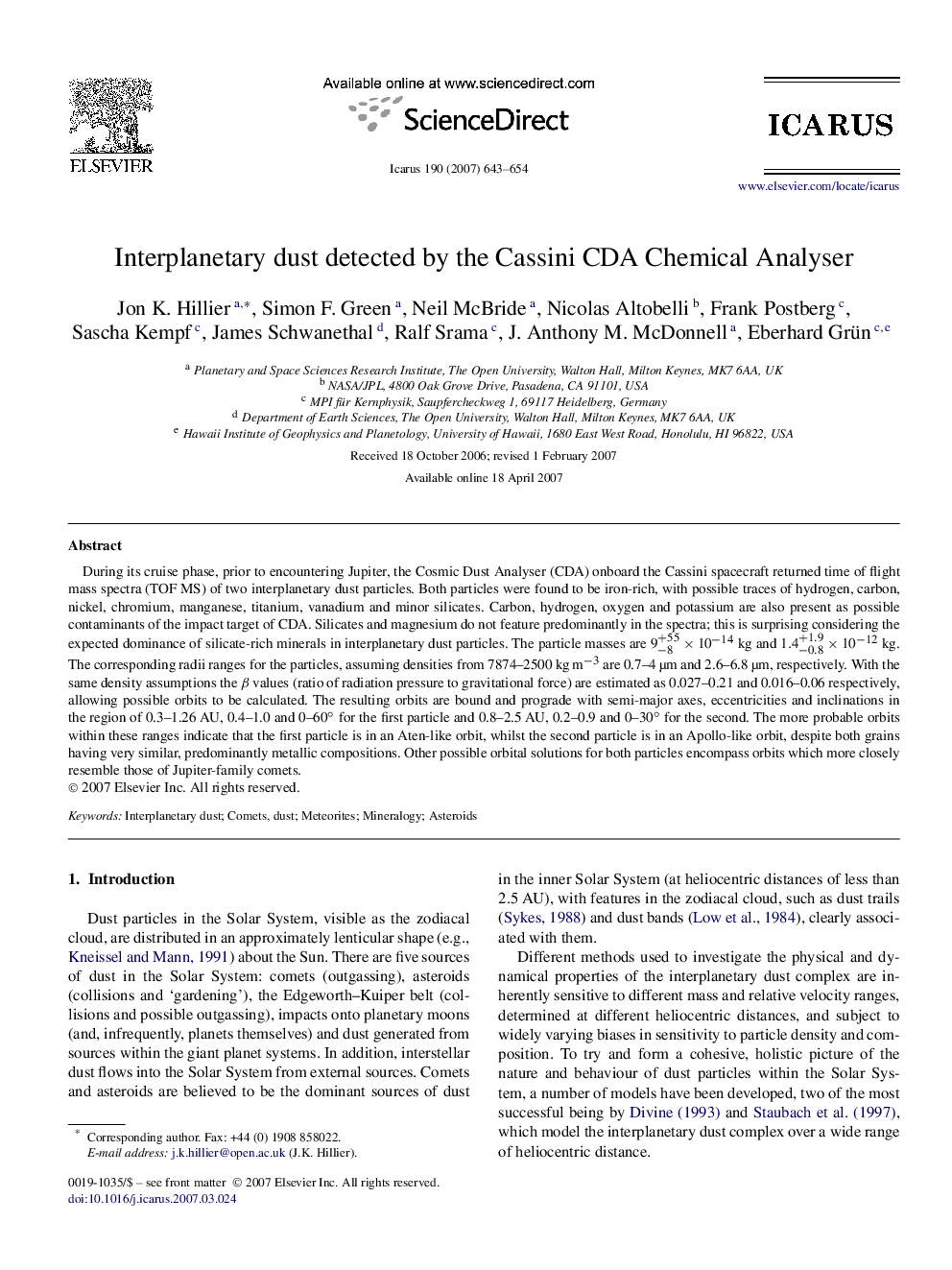| Article ID | Journal | Published Year | Pages | File Type |
|---|---|---|---|---|
| 1775309 | Icarus | 2007 | 12 Pages |
During its cruise phase, prior to encountering Jupiter, the Cosmic Dust Analyser (CDA) onboard the Cassini spacecraft returned time of flight mass spectra (TOF MS) of two interplanetary dust particles. Both particles were found to be iron-rich, with possible traces of hydrogen, carbon, nickel, chromium, manganese, titanium, vanadium and minor silicates. Carbon, hydrogen, oxygen and potassium are also present as possible contaminants of the impact target of CDA. Silicates and magnesium do not feature predominantly in the spectra; this is surprising considering the expected dominance of silicate-rich minerals in interplanetary dust particles. The particle masses are 9−8+55×10−14 kg and 1.4−0.8+1.9×10−12 kg. The corresponding radii ranges for the particles, assuming densities from 7874–2500 kg m−3 are 0.7–4 μm and 2.6–6.8 μm, respectively. With the same density assumptions the β values (ratio of radiation pressure to gravitational force) are estimated as 0.027–0.21 and 0.016–0.06 respectively, allowing possible orbits to be calculated. The resulting orbits are bound and prograde with semi-major axes, eccentricities and inclinations in the region of 0.3–1.26 AU, 0.4–1.0 and 0–60° for the first particle and 0.8–2.5 AU, 0.2–0.9 and 0–30° for the second. The more probable orbits within these ranges indicate that the first particle is in an Aten-like orbit, whilst the second particle is in an Apollo-like orbit, despite both grains having very similar, predominantly metallic compositions. Other possible orbital solutions for both particles encompass orbits which more closely resemble those of Jupiter-family comets.
